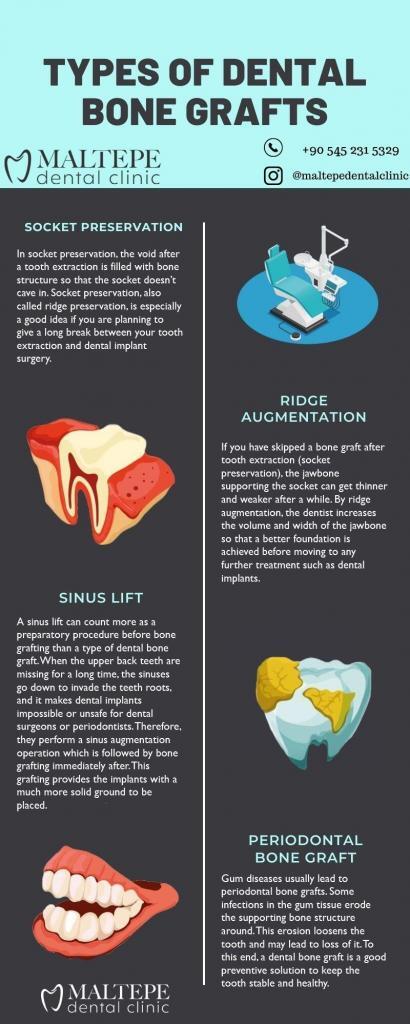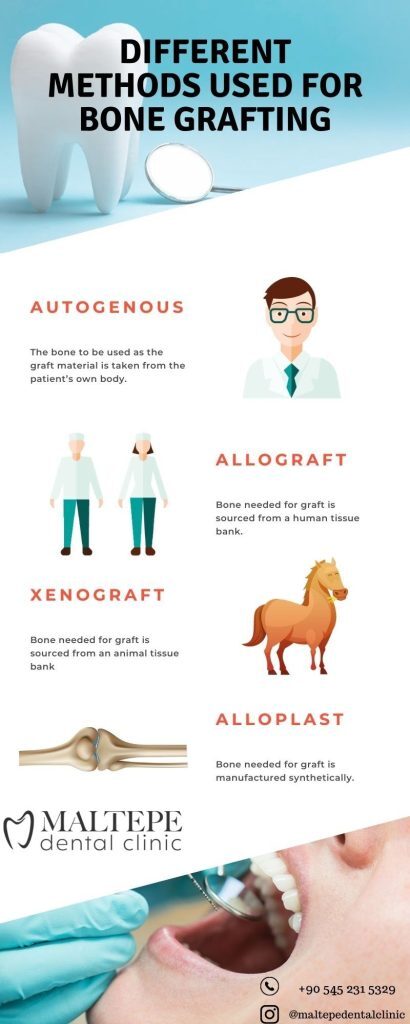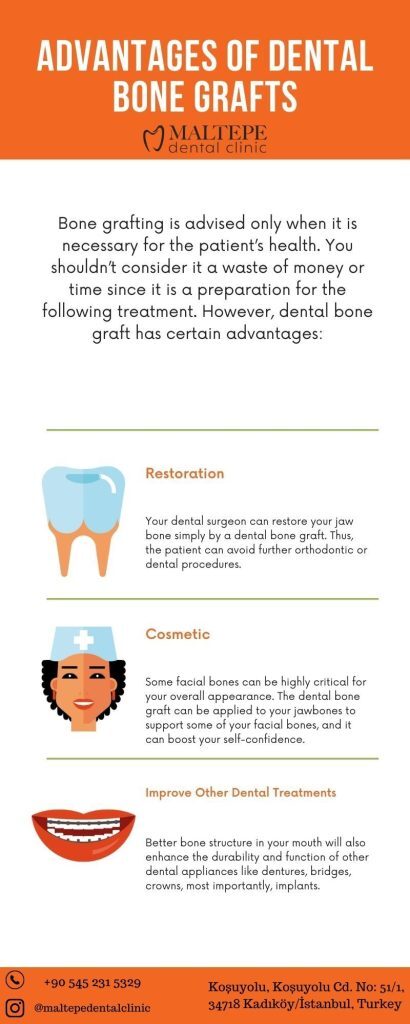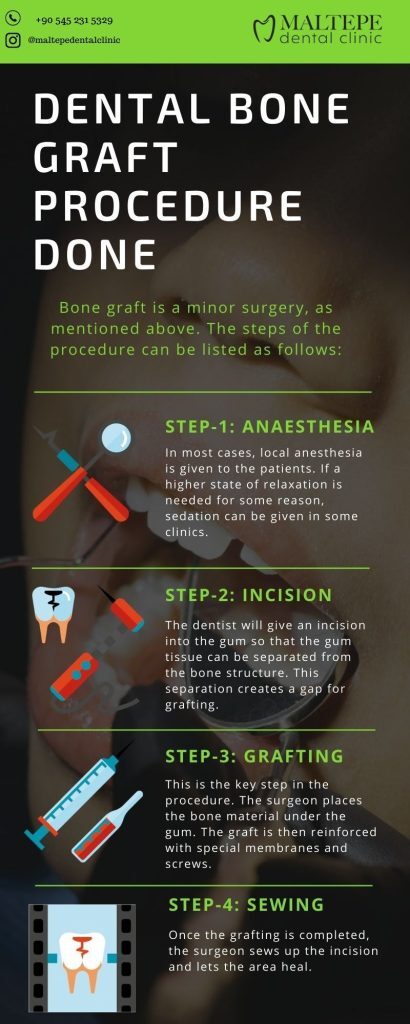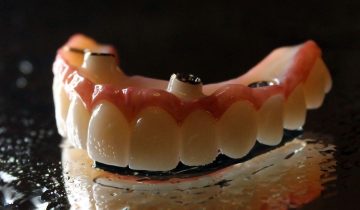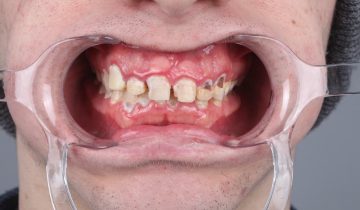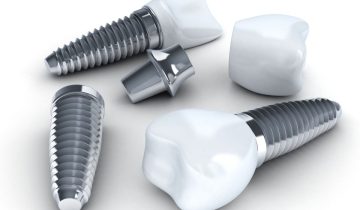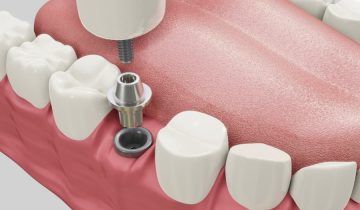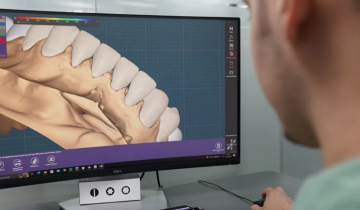Last updated on May 27th, 2024
A dental bone graft is a well-known treatment performed before the dental implants procedure if the patient’s bone is not enough in terms of volume and strength. However, many people don’t know much about it until they have to get the treatment.
In this guide, you can find decent answers to FAQs about dental bone grafts. In addition, the guide will touch on a broad range of issues, making you more knowledgeable and prepared if you have to get a dental bone graft in the near future.
What Is A Dental Bone Graft?
To put it simply, a dental bone graft is a treatment of adding extra bone to your jaws. A need for grafting may arise due to the loss of proper bone structure in your mouth. An amount of bone is taken from your own body or some other sources and added to your jaws.The reasons for dental bone graft may vary. Although these needs will be explained later in this guide, suffice to say that bone grafting doesn’t necessarily mean any patient with a smaller bone structure needs a bone grafting operation.
What Are The Types Of Dental Bone Grafts?
There is not only one type of dental bone graft. Here are the four common types of bone grafts:
Socket Preservation
In socket preservation, the void after a tooth extraction is filled with bone structure so that the socket doesn’t cave in. Socket preservation, also called ridge preservation, is especially a good idea if you are planning to give a long break between your tooth extraction and dental implant surgery.
Ridge Augmentation
If you have skipped a bone graft after tooth extraction (socket preservation), the jawbone supporting the socket can get thinner and weaker after a while. By ridge augmentation, the dentist increases the volume and width of the jawbone so that a better foundation is achieved before moving to any further treatment such as dental implants.
Sinus Lift
A sinus lift can count more as a preparatory procedure before bone grafting than a type of dental bone graft. When the upper back teeth are missing for a long time, the sinuses go down to invade the teeth roots, and it makes dental implants impossible or unsafe for dental surgeons or periodontists. Therefore, they perform a sinus augmentation operation which is followed by bone grafting immediately after. This grafting provides the implants with a much more solid ground to be placed.
Periodontal Bone Graft
Gum diseases usually lead to periodontal bone grafts. Some infections in the gum tissue erode the supporting bone structure around. This erosion loosens the tooth and may lead to loss of it. To this end, a dental bone graft is an excellent preventive solution to keep the tooth stable and healthy.
What Are The Different Methods Used For Bone Grafting?
Depending on the peculiarities of the case and the patient, there may be different bone grafting methods to be followed by the dentist.
Autogenous:
The bone to be used as the graft material is taken from the patient’s own body.
Allograft:
Bone needed for graft is sourced from a human tissue bank.
Xenograft:
Bone needed for graft is sourced from an animal tissue bank.
Alloplast:
Bone needed for graft is manufactured synthetically.
Who Can Have A Dental Bone Graft?
A dental bone graft might be necessary if you have lost an adult tooth, especially when the bone structure supporting that tooth is disappearing. This disappearance leads to bone loss in some cases. A dental bone graft can recover the bone loss. However, not every missing tooth needs dental bone loss surgery. Instead, it needs a close examination of your case.
Another group of patients that possibly need to have bone graft is those planning to have dental implants. As mentioned above, the base that the implant will be screwed should be strong enough to hold it firmly. If you don’t have enough bone structure or the existing structure is not strong enough, you might need to have a bone graft in your mouth.
Losing an adult tooth due to a gum disease might also need you to have bone grafting. Once you lose a tooth, the jaw bone may recede, and the bone structure around the teeth begins to disappear. This might create a big problem if you are planning to get dental implants later. Also, if you have multiple tooth losses, your facial expression might get saggy. Therefore, you might need to have a bone graft if you have multiple tooth losses.
Bone grafting can restore your facial appearance and provide you with a safer post-tooth extraction period.
Does Everyone Need A Bone Graft Before Getting Dental Implants?
No. Not everyone needs to have a bone graft as long as they have enough bone structure in terms of volume and strength. Your dentist can tell you about your particular case by examining your jaw structure. Generally, they perform the examination using special imaging technologies, which illustrate the existing jaw structure clearly. Thus, you don’t need to worry about the possibility of a bone graft for a dental implant.
What Are The Advantages Of Dental Bone Grafts?
Bone grafting is advised only when it is necessary for the patient’s health. You shouldn’t consider it a waste of money or time since it is a preparation for the following treatment. However, dental bone graft has certain advantages:
Restoration:
Your dental surgeon can restore your jaw bone simply by a dental bone graft. Thus, the patient can avoid further orthodontic or dental procedures.
Cosmetic:
Some facial bones can be highly critical for your overall appearance. The dental bone graft can be applied to your jawbones to support some of your facial bones, and it can boost your self-confidence.
Improve Other Dental Treatments:
The better bone structure in your mouth will also enhance the durability and function of other dental appliances like dentures, bridges, crowns, most importantly, implants.
What Are The Risks Of Dental Bone Grafts?
Bone grafts might have some risks or side effects. However, most of them are not severe but more common, while there are more severe risks.
Pain and swelling in the donor area and/or grafted area are the most common problems that the patients face. However, it is still possible to minimize these side effects using pain killers and ice packs. Bleeding can be another problem in the grafted area. It is usually temporary, though.
The more serious risks include infection, blood clots, rejection of the graft, and nerve damage. These risks are very rare but serious. You should immediately see your dental surgeon as soon as you notice these serious adverse effects. Examining the problem, the surgeon may decide to remove your dental bone graft or renew it.
How Painful Is A Dental Bone Graft?
A dental bone graft is not very painful since you will be anesthetized during the process. Even after the operation, it is not much painful unless it is an autogenous operation. In autogenous surgery, the bone needed for grafting is taken from your own body- usually from the hips- which means you have two surgeries. Though the healing process in both areas is pretty short, you can still feel a little bit of pain and discomfort for a few days. Thus, resting at home and taking your prescribed medicine might be the best thing you can do meanwhile.
If the bone is taken from other sources, then it is even less painful. You just need to take care of your mouth by using the prescribed medicine.
How Much Is A Dental Bone Graft?
There are two main factors on the cost of dental bone graft: the material used and the complexity of the procedure.
The issue of material refers to where the bone comes from. If they use your own bone, it means two operations as bone extracting and bone grafting. Therefore, the cost can double. If the graft material is harvested from a cadaver, an animal, or an artificial product, then the cost is relatively more affordable. Also, if you need any preceding or following treatment, the grafting can be tailored accordingly. Since the complexity of the procedure is affected by such issues, the cost of bone grafting may vary accordingly.
Unfortunately, whatever the dental bone graft cost, UK NHS does not cover the expenses in most cases. You can ask a dental clinic for the details about the price considering your particular case.
How Do I Prepare For A Dental Bone Graft Surgery?
Prior to dental bone grafting, you don’t need a great deal of preparation. However, it would still be a good idea to discuss the medicine you are already taking since some might cause extra bleeding during the operation. Also, you should stop eating or drinking 8-12 hours earlier than the operation.
Bone grafting is a little invasive yet still a minor surgery. Therefore, you should also plan the operation day and the process afterward. In addition, you should arrange for someone (a family member or a friend) to stay with you at the clinic one day if needed or drive you home after the surgery.
Finally, since you might have limited mobility and functionality after the surgery, you should also arrange your work or school accordingly.
How Is The Dental Bone Graft Procedure Done?
Bone graft is a minor surgery, as mentioned above. The steps of the procedure can be listed as follows:
Step-1: Anaesthesia
In most cases, local anesthesia is given to the patients. If a higher state of relaxation is needed for some reason, sedation can be given in some clinics.
Step-2: Incision
The dentist will give an incision into the gum so that the gum tissue can be separated from the bone structure. This separation creates a gap for grafting.
Step-3: Grafting
This is the critical step in the procedure. First, the surgeon places the bone material under the gum. The graft is then reinforced with special membranes and screws.
Step-4: Sewing
Once the grafting is completed, the surgeon sews up the incision and lets the area heal.
What Should I Do In The Dental Bone Graft Recovery Process?
After the bone graft dental surgery, the dentist will give you some instructions for the following days at home. Most probably, you will be prescribed antibiotics and pain relievers. You should strictly follow the instructions for these so that you can avoid unbearable pain and infection.
You should also:
- apply ice packs to stop swelling and pain
- eat bland food
- put your head a bit elevated during the sleep
- avoid hot drinks and crunchy food
- avoid contact sports
- try to take vitamin K2 and vitamin D
A few weeks later, your jaw will feel normal, but it doesn’t mean that you are ready for further treatment such as implants. You should also discuss the healing process and further treatment (if needed) with your dentist at your periodic visits to your dentist.
When Should I See My Doctor After The Dental Bone Graft?
Normally you should see your dentist 1-2 weeks after the surgery. You can discuss the healing process at this meeting. However, if you feel increasing pain, swelling, and redness around your gums, you should urgently see your surgeon. Also, tingling and numbness might need urgent care if they are persistent.
To Conclude
Dental bone grafting is an effective and practical solution to various dental problems. You don’t need to worry about the procedure since high-quality service and advanced technology ensure better results in dental bone graft operations today.
SOURCES
https://www.ncbi.nlm.nih.gov/pmc/articles/PMC6040265/
https://www.ncbi.nlm.nih.gov/pmc/articles/PMC8150679/

